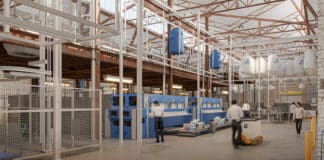By Heidi Schwartz
Published in the November 2006 issue of Today’s Facility Manager
Anyone who has ever walked into a damp, musty facility knows what it’s like when the sensation hits. The smell is unpleasant, and the general feeling is anything but hospitable. Combine that with the year-round heat and humidity of the Southeast, and it’s a wonder any hotel could survive under those conditions.
So when executives at the Paramount Hotel Group and AMC Delancey Group, Inc. decided to purchase an independently owned and operated property in North Orlando’s desirable Maitland Center corporate park, members of the team knew they were in for a major undertaking. In addition to new construction projects, the Paramount Hotel Group of Fairfield, NJ specializes in finding sound properties that can be renovated and reopened to run profitably.
Despite the solid nature of the original structure, “the interior was really tired,” recalls Stephen Siegel, head of project management with Paramount. “It hadn’t been touched in years, except for some superficial upgrades. We knew from the beginning that a complete renovation of the 390-room hotel would be required.”
The Preliminary Steps
Built in the 1980s, the original property actually went into receivership in early 2005. It was eventually purchase by Paramount and AMC because of its great potential.
The design phase of the project picked up immediately after the deal was finalized. Siegel recollects the swiftness of the transaction.
“We met with the city of Maitland even before the deal was completed (March 2005),” he recalls, “to explain what we wanted to do and make sure they were on board with us in terms of zoning, fire, and other building matters. The city gave us a timeline and reassured us that they could have their revisions back to us in 30 days, as long as we had everything to them within a certain timeframe.”
Preliminary drawings were complete in early July—just around the time AMC/Paramount took ownership and the liquidators came in—and Maitland officials delivered their responses the third week of July. Siegel says, “Alan Johnson from the city of Maitland and Dennis Marshall, the city fire marshal, were terrific—it’s not often you have that kind of turnaround.
“If you have a city that’s willing to work with you, it makes all the difference in the world. Some cities just don’t care,” he adds.
It took five weeks for the liquidators to clear everything out, but by that time, demolition had already started. “Construction began in August 2005 and finished August 2006,” Siegel states, but not without a few snags along the way.
A labor shortage in the region, prompted by cleanup resulting from the aftermath of Hurricane Katrina, added time to the project. “We just couldn’t get workers,” Siegel says. “My contractor had to pull in people from other states, and we housed them locally.”
General Manager Peter N. Valenzuela explains, “I now realize the importance of having a contractor who makes things happen. It’s just, ‘Okay, let’s go!’ Denco, our contractor, did a great job. Were there things I complained about? Absolutely. But there were just as many things that, when you asked them to do something, they did whatever they could to get it done.”
Solid On The Outside
The structurally sound nature of the actual building, which had survived well during several other hurricane seasons, made it unnecessary to subject the facility to major external renovations. Siegel says, “We only had to modify the room count slightly. (We dropped four rooms and made them into complete suites instead of partial suites.) Overall, the building laid out perfectly. It functioned really well.”
However, since Americans With Disabilities Act (ADA) requirements had not been addressed in several areas, it was necessary to make some accessibility adjustments. “For us to comply, we had to change ramps, entrances, and bathrooms for each room and public space (including the pool area). In our restaurant, we created ADA ramps as well,” Siegel explains.
Fire code updates also dictated some significant safety modifications. “When the hotel was originally built,” says Siegel, “no one really thought too much about making sure firewalls between the corridors and the rooms were totally sealed, so we went back and applied fire caulking to every area where the ceiling met the wall.”
In order to satisfy new fire codes, all old entry doors were replaced with a new product that incorporates a fire seal around the entire edge of the door. Firewalls between certain spaces (in the kitchen, for instance) had to be created as well. A new fire alarm system was another significant safety upgrade.
Solving The Mysteries
While moving old walls and constructing new ones, some surprises were inevitable. According to Siegel, “There are always things you find that are not supposed to be there: wires, pipes, and other items of that nature. The existing drawings weren’t accurate—they never are—but that’s part of doing a renovation. You have to assume something is going to be there; you just don’t know how much.”
Another problem with the existing infrastructure was the air conditioning system. Before the renovation, the building had a distinctly unpleasant odor—so common in Florida hotels.
Valenzuela, who relocated to the area with his family in the early stages of the project, recalls, “When we first came here, I stayed in the hotel a few nights, but my wife wouldn’t stay. She checked out.”
While the original building had PTAC units in the guest rooms and central units throughout the first floor, there was nothing on the upper floors in the common spaces. The result was stale, damp air trapped in the facility.
The existing setup was based on a system where air was being pushed out of the building instead of being sucked in from the outside. It was necessary to control the moisture levels and give the building positive pressure.
In the guest rooms, GE DRI-AIRE systems were selected for their ability to handle moisture. For the upper floors, Desert Aire units were installed in the corridors to bring in fresh air and control humidity. Every mechanical air conditioning unit on the first floor was also replaced.
Additional technology upgrades included the incorporation of free wireless and wired Internet capabilities in every guest room. In keeping with the business needs of the clientele, Siegel says, “Guests now have their choice if they want to plug into a wired connection at the desk. Or if they want to sit on their beds and use the wireless card in a laptop, they can do that as well.”
While every area of the hotel offers wireless access, the ballrooms—like guest rooms—also offer both wired and wireless Internet access.
Sweet Dreams Are Made Of This
Infrastructure upgrades were not made at the expense of amenities. Siegel initially worked within Sheraton’s basic standard program when making his Furniture, Fixtures & Equipment (FF&E) decisions, but he incorporated certain modifications and upgrades deemed appropriate for the market.
Overall, guest rooms were configured according to Sheraton’s standard 350 square foot layout—including the company’s signature Sweet Sleeper Beds and allergy sensitive pillows—but wall-mounted, flat-panel LCD televisions replaced those sets typically found throughout bedrooms in the chain. Guest bathrooms were also enhanced with special storefront-like doors and tile upgrades.
“Our interior designer came up with a plan,” says Siegel, “and we had to get Sheraton’s approval.”
Valenzuela sat in on the early design meetings with Sheraton in New York. “That was interesting,” he recalls. “I remember when I saw the color on the board, and I thought to myself, ‘I hope it looks a lot better on the walls!’”
“That’s why you have good interior designers,” Siegel says with a laugh. “They can look at the little splotches of paint and pieces of fabric on the board and exclaim, ‘Yes! It will work.’”
A Learning Experience
Throughout the project, Siegel and Valenzuela concentrated on the numerous issues that dictated the progress of the renovation. Siegel says, “We just focused on getting it complete.”
Valenzuela adds, “When you’re doing things like putting on roofs, installing the air conditioning system, and taking the walls down and putting new ones up—it all seems pretty boring and ugly. But in those last two months, you see the carpet, paint, and lights, and it just makes you go ‘wow!’ all of the sudden.”
Siegel continues, “Then when you go back and see the original pictures, you realize it looks like an entirely different building!”
With a background in accounting, Valenzuela had not previously been involved in a renovation of this nature. His inclusion in the early stages of the project gave him a greater understanding of the building and its inner workings.
“For me, one of the great things about sitting through this whole thing was the fact that I learned from everyone. To have the opportunity to ask questions as they’re knocking out walls to bring that Desert Aire unit down the hallway gave me the chance to see how everything fits together. I know where it’s housed. I also know where all of the electrical and fire cables are in the ceiling. It’s a tremendous source of knowledge,” he states.
Customer Relations
Despite being an existing facility, the building would be primarily staffed with new employees. The same labor shortage that had hit the construction crew had also created low unemployment levels throughout the region.
Still, Valenzuela was able to put together a strong executive team. He explains, “When you open a new facility, it’s probably the closest you’ll ever get with your management team, because you go through all of those growing pains together.”
Before the renovated building officially opened, Valenzuela hosted customer focus groups and potential tour clients to find out how they’d react to the new look and feel of the property. “The things the customers liked were the colors, the vibrant designs, and the creature comforts: the flat screen televisions; the exercise room; the pool; the Sheraton Sweet Sleeper Bed; and other things of that nature. There was also a Starbucks® franchise off the lobby, which intrigued the folks. And the restaurant had great appeal; it’s under a six-story atrium, so it’s like being outside, but in a climate controlled environment. The initial reaction was very positive with these focus groups.”
Open For Business
The Sheraton Orlando North raised its flag on August 24, 2006 to commemorate its official opening following the multi-million dollar renovation. The new property houses 15,000 square feet of flexible meeting space, a restaurant, bar, business center, fitness center, Starbucks, concierge lounge, gift shop, and more.
One of the first groups to book with the property was a youth hockey league—regular visitors who compete at the nearby Richard DeVos Center. According to Valenzuela, one of the members of the group commented, “‘I’ve been coming here for seven years, and I got really annoyed when you guys bought this hotel and closed it. But what a difference!’”
The new facility incorporates the original six-story structure that was gutted to re-establish itself as a new building with interiors by the award-winning Tischler Haus Design Group. The refurbished rotunda lobby offers a warm and elegant ambiance with plush seating, bright persimmon walls, and marble floors with patterned carpet inlay.
Siegel explains, “Now enter the lobby, and it has totally changed. There’s this big atrium area, and four beautiful elevators just shoot up and down.”
The dramatic transformation achieves a distinct “sense of arrival as guests walk through the doors,” Valenzuela observes. “I recently had to work for the weekend, so my family came and stayed—even my wife! She just couldn’t believe it was the same hotel.”
A seasoned veteran of the hospitality industry, Valenzuela says the new building is great from his perspective. Although he knows he won’t get a true sense of its nuances until “everyone is dog tired and every room is occupied. You really don’t get the chance to shake out all of the little cobwebs until then.”
Still, he feels strongly that customers will be very satisfied with the new property, “especially because the original was so bad. It really is the ugly duckling that turned into a swan.”
Chad Waetzig, senior vice president, marketing for Sheraton Hotels & Resorts states, “With its upscale style and finishes that speak so well to the Sheraton brand, this hotel exudes comfort. Add to that its prime location, and this property does an exceptional job of fulfilling the needs of business and leisure travelers alike.”
This article was based on interviews with Siegel (ssiegel@paramounthotelgroup.com) and Valenzuela (pvalenzuela@paramounthotelgroup.com), arranged by Sharlet Brennan (Sharlet.Brennan@ypbr.com) of YPBR.


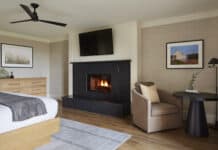


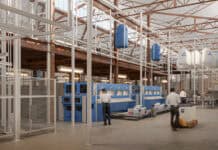

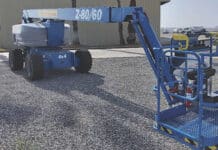
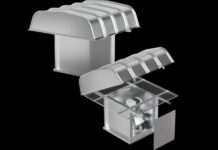







![[VIDEO] Job Order Contracting: Accelerating the Projects that Matter](https://facilityexecutivemagazine.kinsta.cloud/wp-content/uploads/2024/05/maxresdefault-324x160.jpg)
